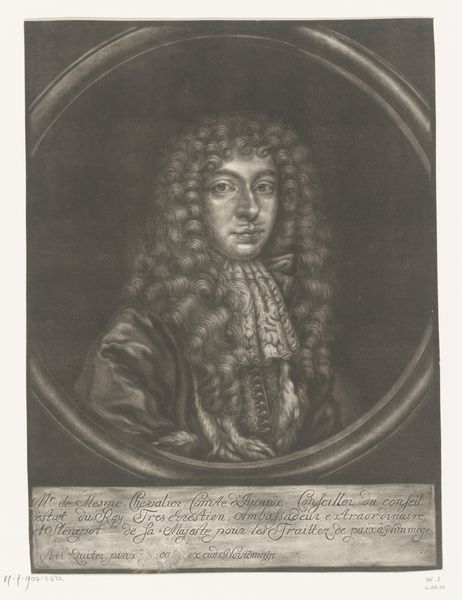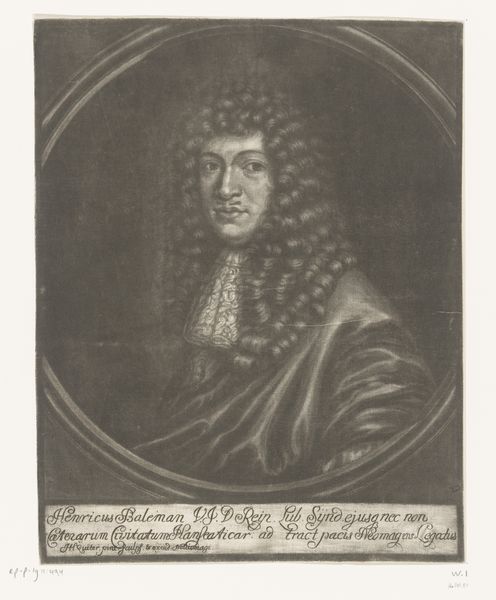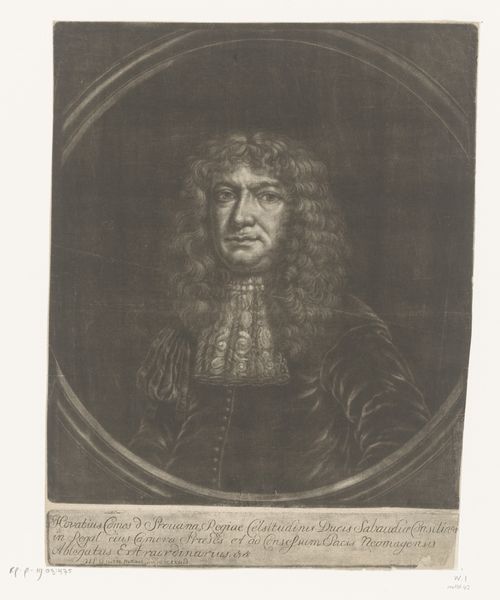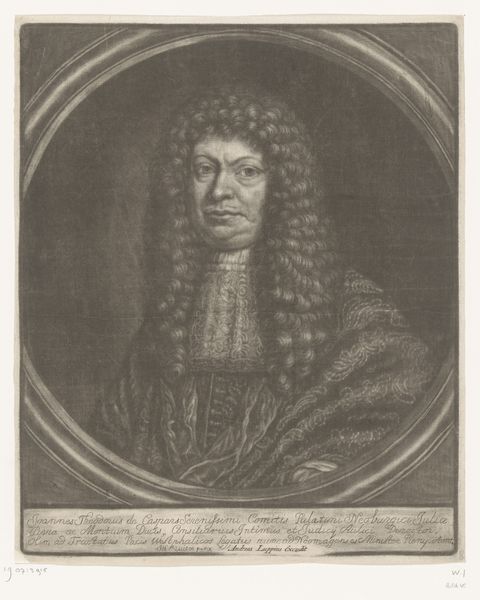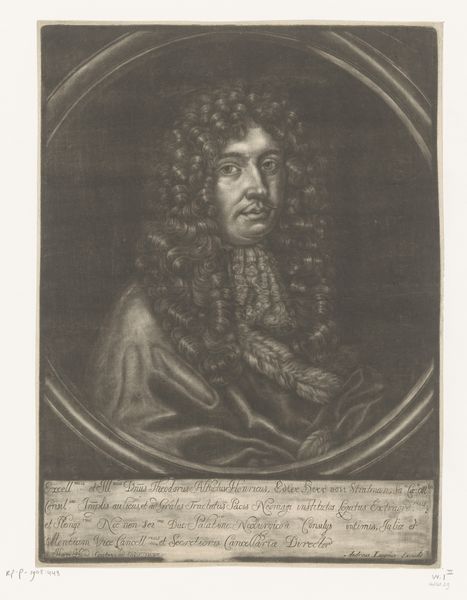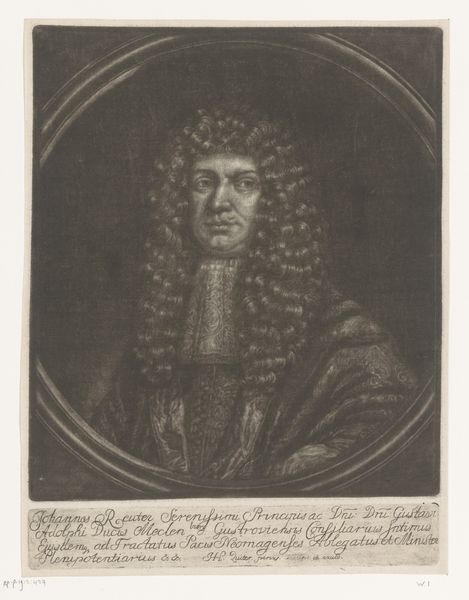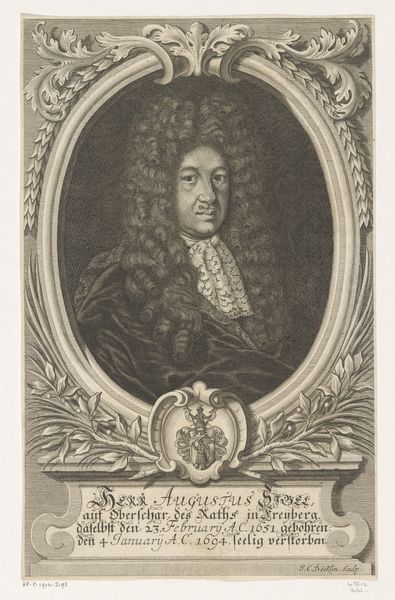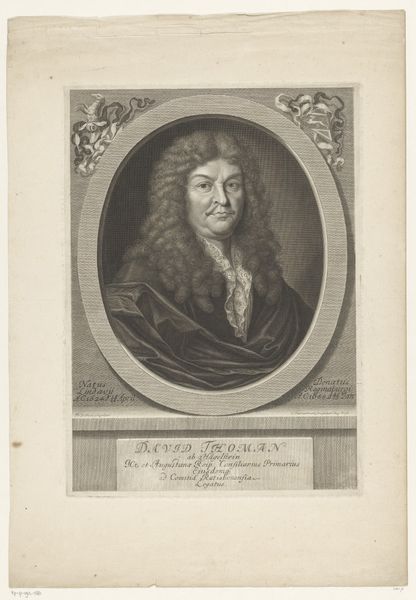
engraving
#
portrait
#
baroque
#
old engraving style
#
portrait reference
#
history-painting
#
engraving
Dimensions: height 307 mm, width 252 mm
Copyright: Rijks Museum: Open Domain
Editor: This is a portrait of Johann Jacob von Huygen, an engraving made in 1679 by Herman Hendrik Quiter. The intense stare gives it an imposing feel, but the circular frame and the soft details in his clothing and hair also give it an intimate feeling. What stands out to you? Curator: It’s fascinating to see how power is constructed in this portrait. Consider Huygen's role as a diplomat negotiating peace treaties. How might this image, created during a time of intense political maneuvering, be used to legitimize and reinforce his authority? Editor: I guess the very act of commissioning a portrait would have sent a message. I hadn’t thought about that. Curator: Exactly! And what about the artistic conventions employed? The Baroque style, with its emphasis on grandeur and emotion, serves to elevate the sitter. We could also discuss how class and gender expectations influenced his visual presentation of status. Consider the significance of his attire, for instance, or even the length and styling of his hair, in conveying authority within 17th-century European society. Do you think a woman would have had a portrait done the same way? Editor: Definitely not. The details would emphasize feminine ideals of the time instead. I hadn't considered all the underlying cultural assumptions at play here! Curator: And don't forget to question whose history gets told and how, especially when we look at historical figures. Considering all those perspectives helps unpack the narrative presented by portraits like this one. Editor: Looking at it now, the portrait is much more than just an image of a man; it is a record of power and cultural norms. Curator: Precisely. It also reveals some very interesting things about what the artist found significant, and about the dynamics between the artist and his patron.
Comments
No comments
Be the first to comment and join the conversation on the ultimate creative platform.
